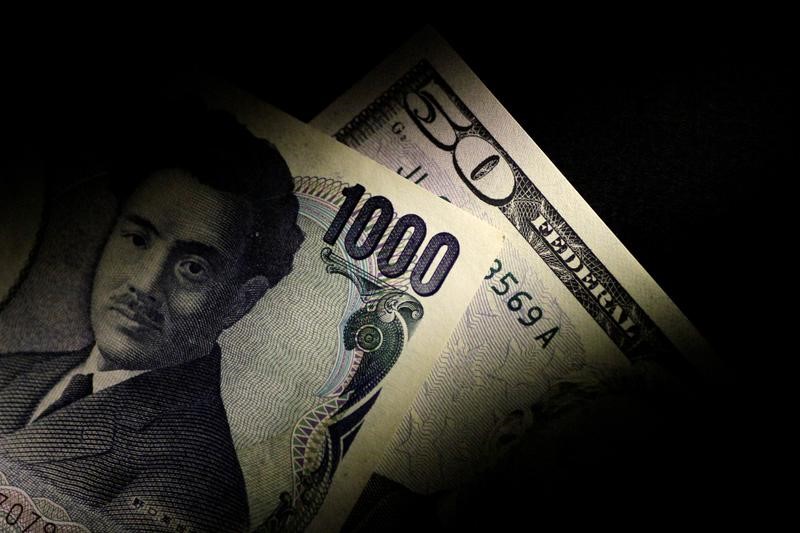By Peter Nurse
Investing.com - The U.S. dollar edged higher in early European trading Friday, remaining in demand after the Federal Reserve’s hawkish stance, while the yen was buoyant after the intervention of Japanese authorities.
At 02:50 ET (06:50 GMT), the Dollar Index, which tracks the greenback against a basket of six other currencies, edged 0.1% higher to 111.248, just below the two-decade high of 111.81 hit in the previous session.
USD/JPY fell 0.1% to 142.28, continuing to fall after a drop of more than 1% on Thursday after Japanese authorities intervened in markets to support the yen for the first time since 1998.
The intervention followed the decision of the Bank of Japan to maintain its ultra-easy monetary policy. This provided a direct contrast to the stance taken by the Federal Reserve on Wednesday when the U.S. central bank lifted rates by 75 basis points and signaled that its interest rates will climb higher and stay elevated for longer than the markets had previously priced in.
“With the Fed turning ever more hawkish and the BoJ still printing money, it looks like the Japanese government wanted to stop a quick run to 150,” said analysts at ING, in a note. “Japanese authorities could well be doing battle with the FX market for the next 6-9 months as the dollar stays strong.”
Elsewhere, a number of major currencies neared fresh lows against the surging dollar, which benefited from rising Treasury yields in the wake of the Fed's policy-setting meeting.
EUR/USD fell 0.2% to 0.9813, not far removed from the 20-year low of 0.9807 hit overnight. Flash September purchasing managers' indexes for the Eurozone are due later in the session, and are likely to illustrate the darkening regional economic outlook.
GBP/USD fell 0.3% to 1.1223, just off a new 37-year low of 1.1213 hit overnight, with the Bank of England's move to lift interest rates by 50 basis points on Thursday having little impact on the beleaguered pound.
“What stands out most from this decision is that the Bank of England's Monetary Policy Committee is becoming more divided,” ING added, “for the first time since the great financial crisis, we have a three-way split.”
“For investors, this increasing divide should be seen as a sign that market expectations are unlikely to be met.”
The risk-sensitive AUD/USD fell 0.3% to 0.6621, USD/CNY rose 0.3% to 7.0981, with the yuan hitting a fresh two-year low against the dollar, while USD/TRY rose 0.3% to 18.3930, as the lira trades near its all-time low after Turkey's central bank delivered another surprise 100 basis-point rate cut, bucking the global tightening trend.
